
Crime thrillers are ones that can stick out on a viewer’s mind for a variety of reasons. They are not just crime films and it is wrong to label one as such. Yes, this sub-genre of crime films can fall into Pre-Code gangster pictures, Film or Neo Noir to Poliziotteschi to police or serial killing procedural, gangster B Movie, Yakuza, Cosa Nostra, and the list goes on and on. A crime thriller tends to have characters involved in an investigation, hunt, or situation that bleeds suspense amongst criminality.
A crime thriller can be done poorly as we know due to cliche, style over substance, or poor performances and story. But when done right, at the opportune time in cinematic history by masters in the top of their form – you get magic. The list below ranges from many forms of the crime thriller from serial killers, procedurals, heist, and of course, psychological turmoil of the main characters involved.
10. The Silence of the Lambs (1991)
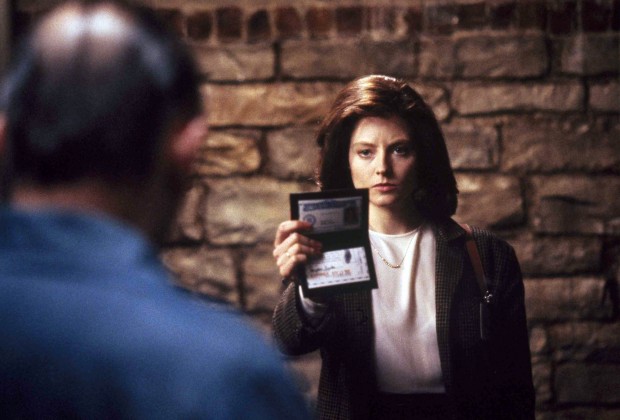
Johnathan Demme was bound by no form of genre. He would jump from crime thriller to social drama to offbeat comedy, sometimes all in one film, cough cough ‘Something Wild’. But with his 1991 film, ‘The Silence of the Lambs’, one cannot even begin to stereotype this film as he soared the crime thriller to new heights in an plethora of examinations on the form.
Based on the novel of the same name by Thomas Harris, the film involves many elements from a typical crime thriller. But is it possible to encapsulate almost all the elements of a crime thrillers into one film? We get the FBI using one serial killer, locked in a prison, to catch another serial killer, on the loose, in atypical procedural hunt, all blended into one psychological horror cat and mouse game between the iconic Hannibal Lector by Anthony Hopkins and Clarence Starling.
Demme uses his trademark of extreme close ups where the actors seem like they’re glaring into the lens to explore the inner psychosis of the characters to show an underlying subtext and tension that is present throughout the course of the film.
Of course, one must mention the stunning sound design, silence and Howard Shore’s score. But Demme keeps that crime thriller element alive in the simplest terms, Buffalo Bill, in a tremendously underrated performance by Ted Levine, as he dances above his victims and Foster surrounded by male agents in deep dread are just some examples. Demme proved that the crime thriller can go above what anyone would expect in a typical crime thriller.
9. Heat (1995)
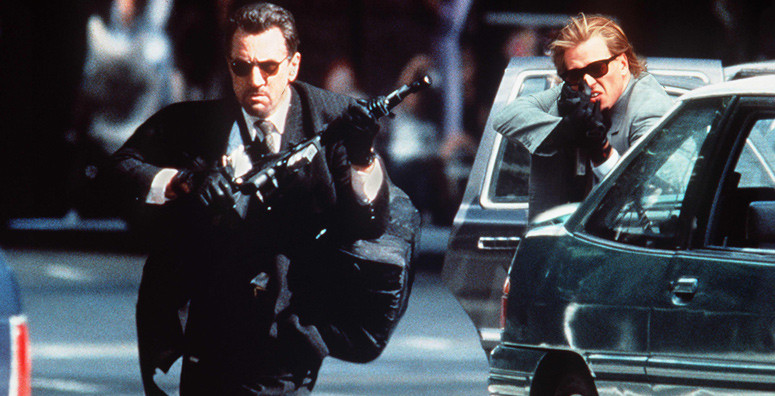
The previous listing was explored slightly by Michael Mann with his take on Hannibal Lector in ‘Manhunt’. But not to overshadow his work, he achieved great success in crime thrillers such as 1981’s ‘Thief’, TV’s ‘Miami Vice’ and 1989’s ‘LA Takedown’. But the latter was developed from a TV movie to ever so quoted and loved, crime thriller classic in ‘Heat’.
Al Pacino and Robert de Niro in one film should suffice any average film goer to go buy a ticket or seek to see this film. Here, Mann takes the typical cop versus robber, though different sides of the law yet with the same mindset on their chosen profession to the highest level of insight, intelligent, and precision. When looking at the context of the film and its screenplay, it goes from botched heist, planning of a robbery, execution, manhunt, tying up loose ends and so on. You’ve seen this before, haven’t you?
But each scene is played to bravura by Pacino, de Niro and the supporting cast. There is never a moment of boredom or repetition of ‘oh, I know this scene’. How could you? After nearly 15 years of cops and criminals, Mann achieves a masterly level of intimate storytelling, character development, and filmmaking. He blends style and realism seamlessly to explore the themes he sends out to discover in his Los Angeles underbelly criminal world. After almost 3 hours, you’ve never been so glued and wanted more from a crime thriller.
8. Le Cercle Rouge (1970)
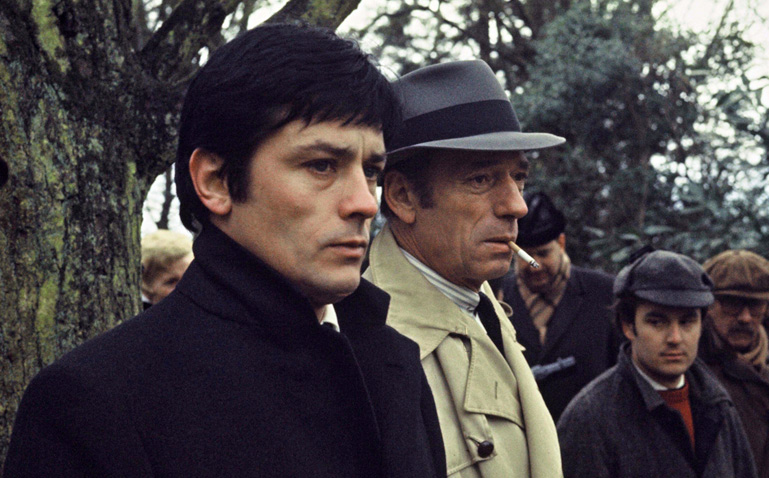
Maybe the godfather of the French New Wave or the greatest director of crime films, Jean Pierre Melville hit a pinnacle of cinema with his 1970 masterpiece. He explored the lone existential hitman, the police procedural, prison drama and heist films before, but with ‘Le Cercle Rouge’, he summoned all his expression and love of the crime thriller into one cinematic experience.
What can one say about this film and how it touches upon the crime thriller? Melville explores it all from the alcoholic ex-cop at a last shot for a robbery, a wanted and recently escaped prisoner, a cop hot on their tails, and recent release convict who is wasting no time for the next gig. But it’s not only the ‘whats’ of the film, it’s the ‘how’. Regular cinematographer Henri Decae flawlessly captures the Melville motif of isolated, wet, nightly Parisian streets; the nearly 20 minute dialogue free visual storytelling heist scene, the effortlessly cool Alain Delon, Yves Montand, and Gian Maria Volonte in silent, stern glances.
Like all great films, the film flows effortlessly in its storytelling of sound and image surrounded by a mood and atmosphere only Melville could create. No frame is wasted in portraying these doomed, anything but run of the mill characters soaked in existential longing and second chances.The film is note perfect of a crime thriller that keeps you completely enthralled in the film and makes you want to revisit the world and atmosphere Melville created immediately.
7. High and Low (1963)
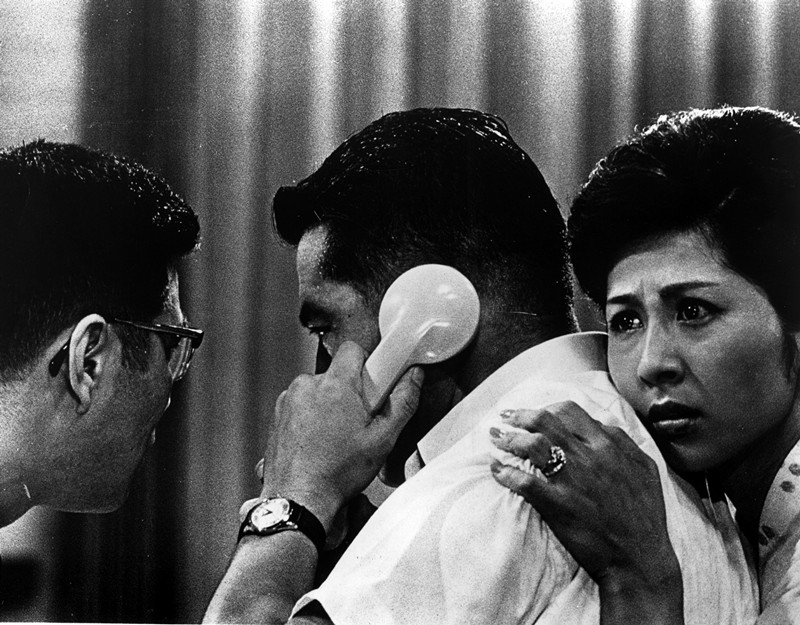
Another cinematic master who tackled many forms, Akira Kurosawa often explored the crime thriller, particularly in post World War II Tokyo. However, it wasn’t until years later he achieved a police procedural of theatrical, cinematic, and societal impact.
The film is based off Ed McBain’s novel, ‘King Ransom’ where a wealthy industrialist, portrayed by Toshiro Mifune, as he races against time to discover the kidnappers of his driver’s son. What is unique about this crime thriller is that it can fall into a police procedural of trying to figure out who took the young man but it’s the subtext and critique of Japanese society and Kurosawa’s direction of actors and mis-en-scene that makes this film stick out.
For nearly the first 50 minutes of the film, we do not leave the high rise apartment. All the action of the kidnapping, extortion, and police on goings are discovered through phone calls and the family’s reaction. Kurosawa makes us feel an unnerving tension and claustrophobia in the apartment because the character’s are threatened and untied in their daily lives. We the audience feel like we are trapped with the characters in their situation.
As the second act of the film progress, we venture into the lands of industrial Japan where we witness the search by the detectives, primarily by Tatsuya Nakadai, and here we discover the true ‘highs’ and ‘lows’ of morality and criminality in the modern Japanese world. Kurosawa blends such a heightened level of clarity of what is being done and the consequences in this police procedural, there are truly no other forms and films that match his film here.
6. Zodiac (2007)
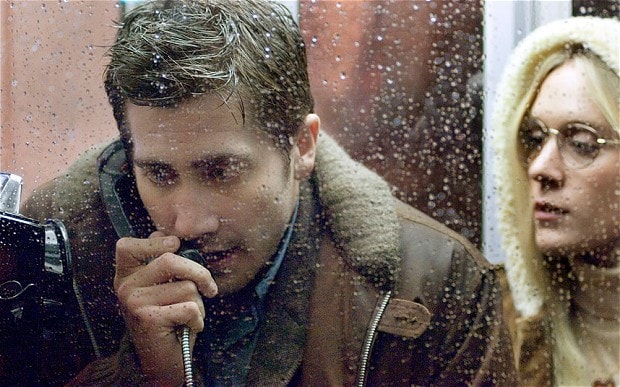
David Fincher needs his films to be exactly the way he sees them. His films are wide, precise, no frame is wasted, no object in the scene is for nothing, and the performances and script are so tight, no bubbles can be squeezed out for the sake of the story. So when Fincher directed a factual, based story on the Zodiac killings in northern California in the 1960s according to police and journalistic reports, you knows it’s going to be loyal to his vision; and that is this film.
Where other serial killing films focus solely on the actual killer or the detectives figuring out the case, Fincher tends to focus on the facts that shaped the case. His focuses is the on people’s obsession who try to solve the murders such as Robert Graysmith, played by Jake Gyllenhaal.
For each Zodiac murder, Fincher used different actors to fit the physical description and maskings of the killer so we the audience can never truly figure out who the killer was, as in real life. However, what makes this a crime thriller over true crime or detective story is the psychological obsession and seeking of the truth by all the players involved.
After suspects come and go, clues resonate and disappear, and phone calls to leave your back shivering, you are left with a portfolio of who the Zodiac killer could be from several point of views. Fincher painted an entire case that allows the audience to go along for the ride as if they were on the feel in San Francisco during that time.